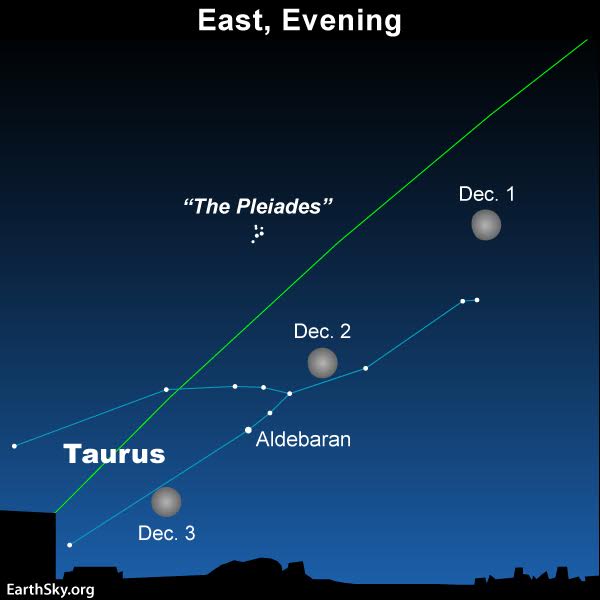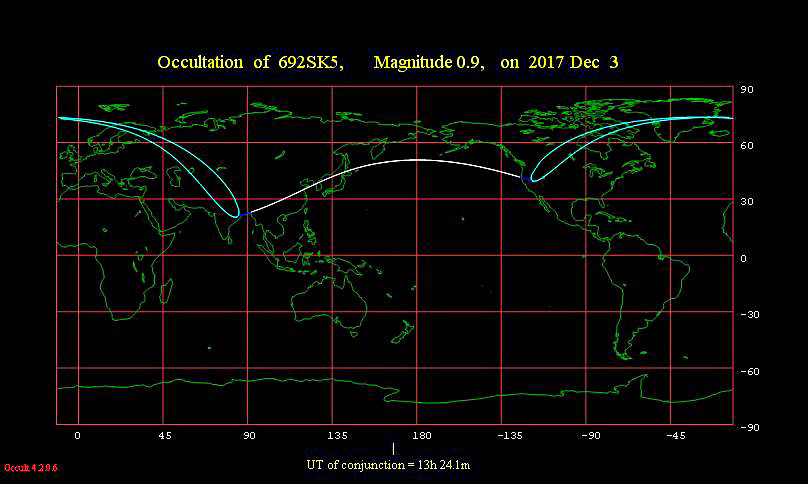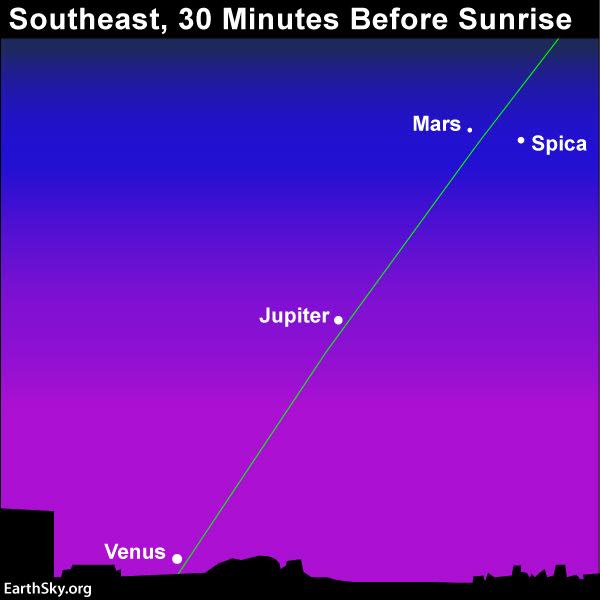
Tonight – December 1, 2017 – an almost-full waxing gibbous moon lights up your sky nearly all night long. Because the moon is so very bright, it may be difficult to spot the constellation Taurus‘ two major signposts – the star Aldebaran and the Pleiades star cluster. Put your finger over the moon and possibly you’ll have a better view of Aldebaran and/or the Pleiades cluster.
Look for the moon and the constellation Taurus the Bull to travel across tonight’s night sky from east to west. The moon and Taurus appear in the east at nightfall and early evening. The moon, Aldebaran and the Pleiades climb upward during the evening hours, and soar highest up for the night at or near midnight. Thereafter, the moon and Taurus will sink westward, to sit low in the west before morning dawn.
The moon and the constellation Taurus cross the sky from east to west for the same reason that the sun crosses the sky from east to west during the day. The Earth spins on its rotational axis from west to east, making it appear as though the sun, moon, planets and stars actually travel westward across the sky every day. But it’s actually the rotating Earth that’s doing the moving.
Because of the moon’s orbital motion around Earth, the moon is actually moving toward Aldebaran as we speak. Note the moon’s position relative to Aldebaran this evening, on December 1, and note the moon’s position at the same time tomorrow evening, on December 2. No matter where you live on Earth, the moon will be closer to Aldebaran on the sky’s dome on December 2 than on December 1.

In fact, it you were at the right spot on Earth, it’d be possible to watch the moon occult (cover over) Aldebaran on the night of December 2-3. As shown on the worldwide map above, this occultation is visible to the north (above) the white line: northwest North America, northern Greenland and much of Asia. Northwestern North America will see the occultation in the morning hours before sunrise on December 3. But from anywhere worldwide, this lunar occultation of Aldebaran will be very difficult to observe in the glaring light of the super full moon.
For your convenience, we give the local times of the occultation for various localities below:
Seattle, Washington (December 3, 2017)
Occultation begins (Aldebaran disappears): 6:09:41 a.m. local time
Occultation ends (Aldebaran reappears): 6:46:25 a.m. local timeAnchorage, Alaska (December 3, 2017)
Occultation begins (Aldebaran disappears): 4:38:25 a.m. local time
Occultation ends (Aldebaran reappears); 5:32:25 a.m. local timeUlan Bator, Mongolia (December 3, 2017)
Occultation begins (Aldebaran disappears): 7:54:46 p.m. local time
Occultation ends (Aldebaran reappears): 8:51:35 p.m. local time
Click here for the occultation times in Universal Time (UTC) for hundreds of localities. Here’s how to convert UTC to your local time.

Starting this evening, on December 1, and for the next few days, see if you can spot the star Aldebaran in the moon’s glare.











